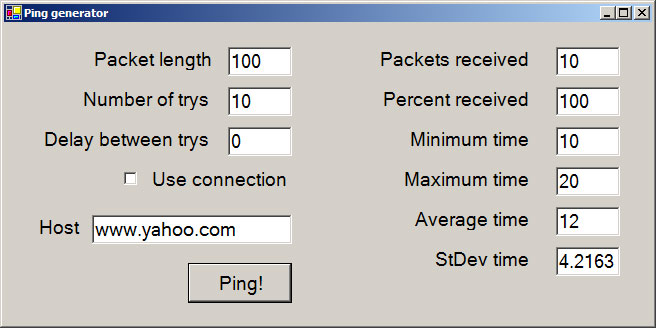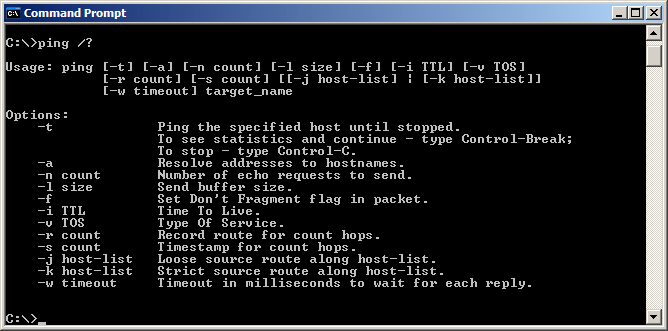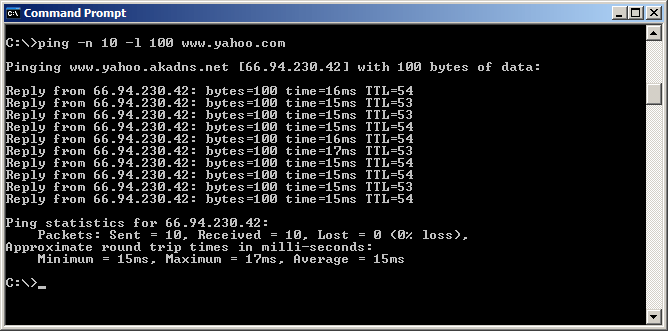As you see, I requested ten, 100-character pings of www.yahoo.com. All ten pings were received and acknowledged, and the time ran from 10 to 20 milliseconds with an average of 12 and a standard deviation of 4.2163.

With a GUI, user options are apparent in forms or menus, but that is not the case with CLI programs. For that reason, most CLI programs have accompanying help screens. For example, in Unix, one displays manual pages with man command. The command man ping would display help for ping.

